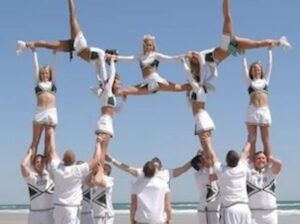Smart Dribbling to Help Effectiveness
Believe it or not, dribbling is actually one of the most overused facets of basketball — you can do so much more, with so much less.
Commonly, players commit a majority of turnovers by overdribbling — and as the word suggests, we can easily fix that. The issue is not knowing how to dribble, but instead when to dribble as to maximize effectiveness. Nothing frustrates a coach more than when a team moving the ball well, but it stops because a single player dribbles once or more without doing anything productive. Unnecessary dribbling can be stopped if players are taught to put it on the floor in only four situations.
Taking the Ball to the Basket
If used correctly, players can cover a lot of ground in less dribbles by briefly looking and/or making a pass fake before moving. Also, dribbling to an open area is not productive unless the coach or player has a specific reason. On all levels, many players attack the baseline because space exists and not because they have a good shot or easy pass.
Improve Passing Angles
Feeding the post is a lost art in today’s game and it should come as no surprise. Many players do it poorly because they settle for awkward passing angles or when they’re being forced into. With a few smart dribbles, it becomes much easier passing to other players.
Balance the Floor or Maintain Proper Spacing
A famous coach once said ‘offense is spacing and spacing is offense.’ Periodically, offense becomes tight and multiple players end up trying to maneuver in a 10-to-16 foot square. Two or three correctly used dribbles creates easy cutting or penetration possibilities.
Avoid or Escape Trouble
Players make games difficult by wasting a dribble. Intelligent usage enables players in dangerous situations or being trapped to escape from turnovers, save time-outs, and maintain team momentum.
Games are frustrating for everyone if poor consistency exists. Teach dribbling skills and concepts to maximize effectiveness. Remind athletes to keep sight over the whole court before deciding to dribble. Finally, make sure players understand the reality of advancing the ball and making use of smart and effective dribbles — if they do, your team will be much better off.
How useful was this post?
Click on a star to rate it!
Average rating 0 / 5. Vote count: 0
No votes so far! Be the first to rate this post.




